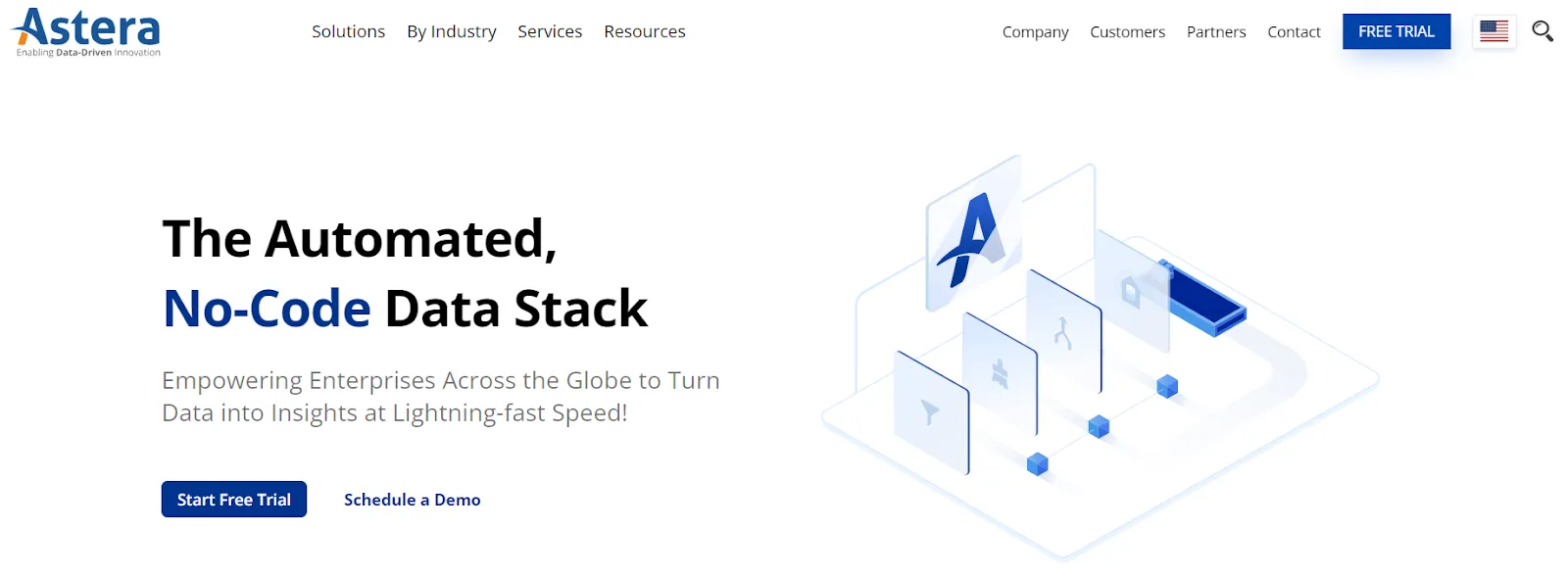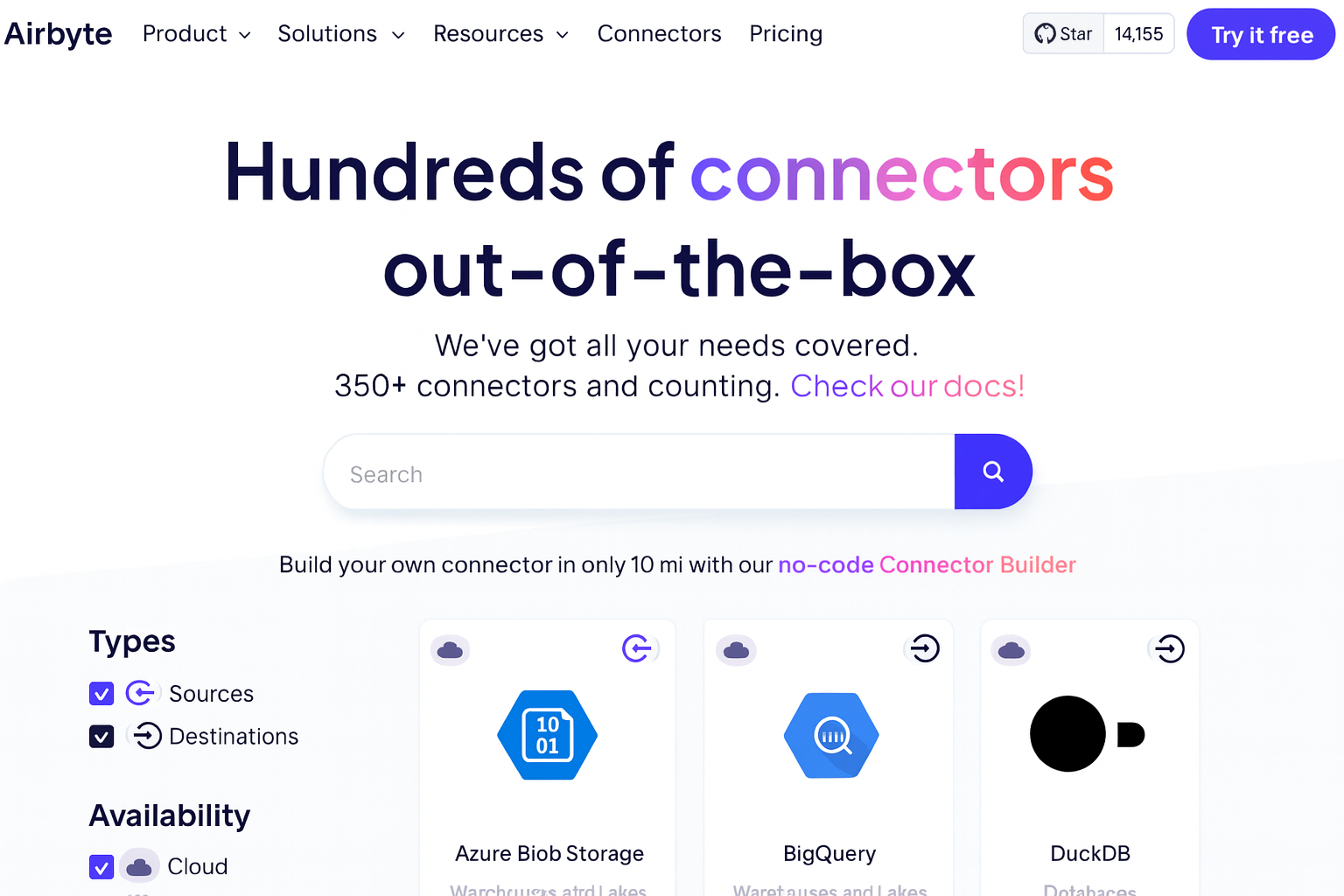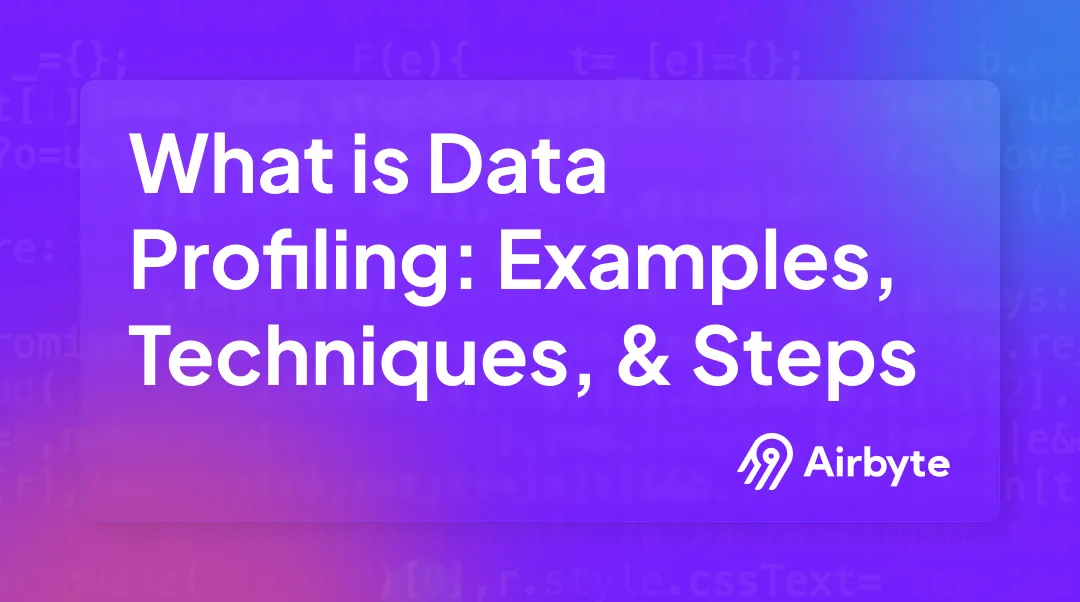What is Data Profiling: Examples, Techniques, & Steps
Summarize this article with:
✨ AI Generated Summary
Data profiling has emerged as the cornerstone of trustworthy data operations, transforming how organizations approach data quality management and analytical readiness. Unlike traditional data validation approaches that treat quality as an afterthought, modern data profiling integrates seamlessly into data engineering workflows, ensuring every dataset meets stringent standards before entering analytical pipelines. This comprehensive approach prevents costly data quality failures that can undermine business decisions and regulatory compliance efforts.
What Is Data Profiling and Why Does It Matter?
Data profiling is the systematic process of examining, analyzing, and documenting datasets to understand their structure, content quality, and relationships. This practice goes beyond surface-level data validation to provide deep insights into data patterns, anomalies, and dependencies that impact analytical outcomes. Modern data profiling combines statistical analysis with automated quality checks to create comprehensive data health assessments.
The process involves three core analytical dimensions: structural examination to validate schema consistency and data types, content analysis to identify missing values and pattern violations, and relationship mapping to understand data dependencies across sources. Through these examinations, data profiling creates a detailed blueprint of your data landscape that guides integration decisions and quality improvement initiatives.
Data profiling serves as the foundation for effective data governance by providing objective metrics about data completeness, accuracy, and consistency. This enables organizations to make informed decisions about data fitness for specific analytical purposes while establishing baseline quality standards that support regulatory compliance and business intelligence initiatives.
What Are the Key Benefits of Data Profiling?
Helps Assess Data Quality
Data profiling provides a comprehensive assessment of data health by systematically examining completeness ratios, consistency patterns, and accuracy indicators across datasets. This process creates detailed quality scorecards that highlight specific issues like missing values, format inconsistencies, and statistical anomalies. By quantifying data quality through measurable metrics, profiling enables organizations to prioritize remediation efforts and establish quality benchmarks that support continuous improvement initiatives.
Pinpoint Data Issues
Through automated scanning and pattern recognition, data profiling identifies specific quality violations including duplicate records, referential integrity failures, and constraint violations. This granular issue identification prevents downstream analytical errors by catching problems before they propagate through data pipelines. The process also categorizes issues by severity and business impact, enabling data teams to focus remediation efforts on the most critical quality problems.
Supports Data Governance
Data profiling strengthens governance frameworks by providing objective evidence of data quality compliance with organizational standards and regulatory requirements. The documentation generated through profiling creates audit trails that demonstrate due diligence in data management practices. This foundation supports policy enforcement by automatically flagging violations and tracking quality improvements over time.
Ensures Data Compliance
Regulatory compliance requires demonstrable data quality controls, which profiling provides through systematic documentation of data handling practices and quality metrics. The process identifies sensitive data patterns that require special handling under regulations like GDPR or HIPAA, while creating the audit documentation necessary for compliance reporting. Automated compliance checks embedded within profiling workflows ensure ongoing adherence to regulatory standards.
Assists Data Integration Process
Understanding dataset characteristics and relationships is essential for successful data integration initiatives. Profiling reveals schema incompatibilities, data type mismatches, and referential integrity issues that could compromise integration success. This knowledge enables data engineers to design appropriate transformation logic and establish data quality gates that prevent poor-quality data from entering integrated datasets.
💡 Suggested Read: What is Data Matching?
What Are the Different Types of Data Profiling?
Structure Discovery
Structure discovery examines the physical organization and schema characteristics of datasets to ensure consistency and compliance with expected formats. This process validates data types, identifies primary and foreign keys, and analyzes schema evolution patterns that could impact downstream processing. Structure discovery also examines metadata consistency across sources to identify potential integration challenges.
Example: In a university administration database, structure discovery examines the presence of tables like "Students" and "Courses" with "StudentID" and "CourseID" fields, validating that primary keys maintain uniqueness constraints and foreign key relationships preserve referential integrity across academic terms.
Content Discovery
Content discovery performs detailed examination of individual data values to identify quality issues, pattern violations, and statistical anomalies within datasets. This analysis includes null value detection, format validation, and outlier identification that could indicate data corruption or processing errors. The process also examines value distributions to identify unexpected patterns that might signal upstream data issues.
Example: The "Students" table contains missing values in the "GPA" column for certain academic periods. Content discovery identifies these gaps and analyzes whether they represent legitimate null values or data collection failures that require remediation.
Relationship Discovery
Relationship discovery maps the connections and dependencies between data elements across tables and systems to understand data flow and integrity requirements. This process identifies functional dependencies, foreign key relationships, and business rule constraints that govern how data relates across the enterprise. Understanding these relationships is crucial for maintaining data consistency during integration and transformation processes.
Example: In an educational institute, relationship discovery analyzes the connections between "Students" and "Courses" tables, identifying enrollment patterns and prerequisites that create business rules requiring validation during data processing workflows.
What Techniques Are Used in Data Profiling?
Column Profiling
Column profiling examines individual columns to understand their characteristics, quality, and suitability for analytical purposes. This technique analyzes data type consistency, identifies distinct value counts, calculates null percentages, and examines value distributions to detect anomalies. Column profiling also validates that data values conform to expected patterns and business rules.
Cross-Column Profiling
Cross-column profiling analyzes relationships and dependencies between different columns within the same table to identify functional dependencies and business rule violations. This technique includes key analysis to determine columns with unique values in each row and dependency analysis to explore functional relationships between attributes. Cross-column profiling reveals data quality issues that only become apparent when examining multiple attributes together.
Data Pattern Profiling
Data pattern profiling identifies recurring formats, structures, and templates within data to ensure consistency and detect deviations from expected patterns. This technique analyzes formatting trends, examines frequency distributions of common patterns, and identifies outliers that don't conform to established templates. Pattern profiling is particularly valuable for validating data like phone numbers, email addresses, and postal codes.
Data Distribution Profiling
Data distribution profiling analyzes how values are spread across datasets to understand statistical characteristics and identify potential quality issues. This technique examines frequency distributions, calculates statistical measures like mean and standard deviation, and identifies outliers that might indicate data errors. Distribution analysis helps establish quality thresholds and detect data drift over time.
How Do You Perform Data Profiling Step by Step?
By following these steps, you can establish a systematic approach to data profiling that provides reliable insights into data quality and supports informed decisions about data fitness for analytical purposes.
How Does Data Profiling Compare to Data Cleansing and Data Mining?
What Are the Best Data Profiling Tools Available?
1. Data Fabric by Talend

Key features:
- Machine learning-powered automatic cleansing through intelligent deduplication, validation algorithms, and standardization routines that adapt to data patterns.
- Built-in Trust Score methodology that evaluates data reliability using multiple quality dimensions and provides actionable recommendations for improvement.
- Advanced data enrichment capabilities that integrate external reference sources including postal codes, business identifiers, and demographic data to enhance dataset completeness.
2. Astera Centerprise

Key features:
- Flexible custom validation rule engine that allows creation of complex business logic for duplicate detection, missing field identification, and format validation across diverse data sources.
- Specialized Data Quality Mode that provides comprehensive profiling analytics including statistical summaries, pattern analysis, and anomaly detection capabilities.
- Integrated Data Cleanse transformation functionality that standardizes raw data formats while preserving data lineage and audit trails throughout the cleansing process.
3. IBM InfoSphere Information Analyzer

Key features:
- Comprehensive reusable rules library that enables multilevel data quality evaluations with standardized business logic that can be applied consistently across enterprise datasets.
- Extensive reporting capabilities with over 80 configurable report templates for visualizing analysis results, tracking quality trends, and generating compliance documentation.
- Advanced external data source verification that validates third-party data quality before integration, ensuring only high-quality external data enters enterprise systems.
What Are the Modern Best Practices for Data Profiling in Data Engineering?
Strategic Scoping and Prioritization
Modern data profiling emphasizes focused analysis on high-impact datasets rather than attempting comprehensive profiling across all organizational data. This approach prioritizes revenue-critical tables, compliance-sensitive datasets, and frequently accessed analytical sources to maximize profiling ROI. Effective prioritization considers both business value and data complexity to ensure profiling efforts address the most significant quality risks while staying within resource constraints.
Strategic scoping also involves tiering data assets based on business criticality, with different profiling frequencies and quality thresholds applied to different tiers. This enables organizations to maintain rigorous quality standards for critical data while applying lighter-touch profiling to less critical datasets, optimizing resource allocation across the data landscape.
Automation-Driven Efficiency
Contemporary profiling practices leverage machine learning algorithms and automated tools to reduce manual effort while improving consistency and coverage. Automated profiling tools like Great Expectations and Deequ enable continuous quality monitoring that adapts to changing data patterns without constant manual intervention. These tools automatically detect anomalies, generate quality reports, and trigger alerts when quality thresholds are breached.
Natural language processing capabilities now enable automated profiling of unstructured text data, expanding profiling coverage beyond traditional structured datasets. Machine learning models can identify sentiment patterns, extract entity relationships, and detect content quality issues in documents, social media feeds, and other unstructured sources that were previously difficult to profile systematically.
Collaborative Governance Integration
Modern profiling integrates seamlessly with data governance workflows through tools like dbt that embed quality tests directly into transformation pipelines. This approach ensures that profiling becomes part of the development lifecycle rather than a separate quality assurance step, improving both efficiency and coverage. Generic tests enforce standard quality constraints like uniqueness and completeness, while singular tests validate business-specific rules through custom SQL logic.
Collaborative governance also involves establishing clear ownership responsibilities for data quality, with domain experts defining business rules and data engineers implementing technical validation logic. This collaboration ensures that profiling criteria reflect both technical requirements and business context, creating more effective quality validation processes.
Continuous Improvement Loop
Effective profiling practices establish baseline quality metrics and continuously monitor for degradation or improvement over time. This involves comparing current data quality statistics against historical baselines to detect drift, implementing alerting systems that notify stakeholders when quality thresholds are breached, and creating feedback loops that drive ongoing refinement of profiling criteria.
The continuous improvement approach also includes regular review of profiling effectiveness, with metrics tracking how well profiling practices prevent downstream quality issues and support analytical accuracy. This data-driven approach to profiling optimization ensures that quality practices evolve with changing business needs and data landscapes.
What Are the Latest Technological Advancements in Data Profiling?
AI and Machine Learning Integration
Advanced neural networks now enable automated pattern recognition and anomaly detection that surpasses traditional rule-based approaches. These systems learn from historical data patterns to identify subtle quality issues that might escape conventional validation logic. Transformer models analyze complex relationships across multiple data attributes simultaneously, detecting sophisticated fraud patterns and data inconsistencies that require contextual understanding.
Generative AI capabilities enable automated creation of data quality rules based on natural language descriptions of business requirements. Data professionals can describe quality expectations in plain English, and AI systems generate appropriate validation logic, test cases, and monitoring rules. This dramatically reduces the time required to implement comprehensive quality validation while improving coverage and consistency.
Real-Time Streaming Profiling
Modern streaming architectures enable continuous data profiling on live data streams with millisecond latency. Apache Kafka and specialized streaming frameworks perform statistical analysis, pattern validation, and anomaly detection on data in motion rather than requiring batch processing windows. This enables immediate quality feedback and rapid response to data quality incidents.
Stateful streaming profiling maintains contextual awareness across event sequences, enabling detection of complex patterns like unusual transaction sequences or behavioral anomalies that only become apparent when examining multiple related events. This capability is particularly valuable for fraud detection, operational monitoring, and real-time business intelligence applications.
Privacy-Preserving Profiling Techniques
Federated profiling architectures enable quality analysis across multiple organizations or data domains without requiring actual data sharing. These systems compute statistical summaries and quality metrics locally, then combine results to create comprehensive quality assessments while preserving data sovereignty and privacy requirements.
Differential privacy techniques inject mathematical noise during profiling computations to guarantee individual privacy while maintaining the statistical validity of quality assessments. This enables profiling of sensitive datasets like healthcare records or financial transactions while meeting stringent privacy regulations and organizational security requirements.
Edge-Based Profiling Frameworks
Edge computing capabilities enable data quality validation at the point of data collection, reducing network bandwidth requirements while improving quality feedback loops. IoT devices and edge servers perform initial quality checks before transmitting data to central systems, enabling immediate correction of data collection issues and reducing the volume of poor-quality data that reaches analytical systems.
Distributed profiling architectures coordinate quality analysis across multiple edge locations while maintaining consistent quality standards and sharing profiling insights across the network. This approach supports large-scale IoT deployments and geographically distributed data collection while maintaining centralized quality governance.
How Does Data Profiling Integrate With ETL Processes?
ETL (extract, transform, load) processes depend fundamentally on high-quality input data to produce reliable analytical outputs. Data profiling ensures this quality by systematically validating data characteristics before transformation begins and monitoring quality throughout the pipeline execution. This integration prevents poor-quality data from propagating through expensive transformation processes and contaminating analytical datasets.
Modern ETL architectures increasingly adopt the ELTT (Extract-Load-Transform-Trust) paradigm, which embeds continuous profiling throughout the data pipeline rather than treating it as a separate preprocessing step. This approach enables real-time quality monitoring and immediate response to quality issues, dramatically improving pipeline reliability and reducing the cost of quality failures.
Airbyte's Approach to Integrated Data Profiling
Airbyte revolutionizes data profiling by embedding quality validation directly into data integration workflows, creating a seamless connection between data extraction and quality assurance. This approach eliminates the traditional gap between data movement and quality validation that often leads to downstream analytical failures.

Automated Schema Synchronization and Profiling
Airbyte's change data capture capabilities enable real-time schema evolution tracking that automatically updates profiling rules when source systems change. This prevents profiling failures caused by schema drift while ensuring that quality validation adapts dynamically to evolving data structures. The platform captures detailed metadata about schema changes and their impact on data quality, creating comprehensive audit trails for compliance reporting.
This automated synchronization extends to statistical profiling during data ingestion, where Airbyte captures column-level metrics including null ratios, value distributions, and pattern compliance as data streams through integration pipelines. These metrics become immediately available in destination systems like Snowflake and BigQuery, enabling SQL-based quality analysis without requiring external profiling tools.
Unified Lineage and Quality Tracking
Unlike fragmented toolchains that require manual correlation across multiple platforms, Airbyte's centralized control plane maps data movement and quality metrics end-to-end throughout integration workflows. When profiling detects anomalies such as unexpected null values or duplicate records, lineage metadata enables immediate tracing to source systems, dramatically accelerating root-cause analysis and resolution.
The platform's unified approach to lineage tracking creates comprehensive documentation of how data quality evolves throughout integration processes, supporting both operational troubleshooting and regulatory compliance requirements. This documentation includes detailed records of quality transformations, validation rules applied, and remediation actions taken throughout the data lifecycle.
Key Platform Features:
- 600+ pre-built connectors with embedded quality validation capabilities
- Connector Development Kit for building custom connectors with integrated profiling
- CDC support that maintains quality validation during real-time data synchronization
- Native integration with modern data platforms enabling immediate post-load quality analysis
Key Takeaways
Data profiling represents a fundamental shift from reactive data quality management to proactive quality assurance that integrates seamlessly with modern data engineering workflows. By embedding profiling throughout the data lifecycle rather than treating it as an isolated quality check, organizations can prevent costly data quality failures while building trust in their analytical capabilities.
Modern profiling practices emphasize automation, collaboration, and continuous improvement to create sustainable quality management processes that scale with organizational growth. The integration of artificial intelligence and real-time processing capabilities transforms profiling from a periodic audit function into an active quality monitoring system that provides immediate feedback and rapid response to quality issues.
The strategic value of data profiling extends beyond technical quality assurance to encompass regulatory compliance, governance effectiveness, and analytical trustworthiness that directly impacts business decision-making confidence. Organizations that invest in comprehensive profiling capabilities position themselves to leverage data as a strategic asset while minimizing the risks associated with poor data quality.
FAQs
Is Data Profiling an ETL Process?
Data profiling serves as both a preliminary step and an integrated component of modern ETL processes. While traditional approaches treated profiling as preprocessing, contemporary architectures embed quality validation throughout extraction, transformation, and loading phases to ensure continuous quality monitoring and immediate response to quality issues.
What Is the Best Data Profiling Tool or Library to Use?
Choose a profiling tool based on needs: Great Expectations suits Python workflows with automated validation, while enterprise platforms like Talend Data Fabric offer governance features. Cloud platforms like Airbyte combine data movement and quality checks for streamlined profiling in modern environments.
What Is the Difference Between Data Analysis and Data Profiling?
Data profiling assesses data quality, characteristics, and suitability for analysis, forming a reliable foundation. Data analysis then uses statistical techniques on this clean, profiled data to extract insights, identify trends, and support informed business decisions.

